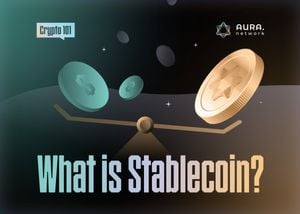Investing with a blockchain token
Prospective investors interested in a blockchain project can get involved by purchasing a “piece” of the network, often called a “token” or “coin”. A token represents ownership of the blockchain network in the same manner that a share represents ownership of a company.
Tokens can be used in various ways:
- Purchasing products associated with the network. For example, because most non-fungible tokens (NFTs) are created in an Ethereum blockchain, one would need ETH tokens to buy the NFTs.
- Speculating on prices: if one believes that the token is underpriced/overpriced, he can speculate on price movements and go long or short.
- Storage of value: because the supply of (most) tokens is limited, it is arguably a decent asset to store value
These features are similar to shares, except that if one buys a good of a company, he can simply sell the share and use fiat money for transactions.
A token holder enjoys two unique benefits that shares do not have:
(1) Staking the token to provide extra incentive to a delegator to create blocks trustworthily
(2) Providing liquidity by storing the token in a liquidity pool (LP) to facilitate its exchange in a decentralized market (DeFi).
Both options net the token holder a number of tokens proportional to their investment. Let the annual percentage yield (APY) measure the rate of return of crypto investment. For example, if the APY is 5% then the one-year return of investing 100 tokens would be 5 tokens. In Staking, the APY depends on the block reward which is usually decreasing over time as more blocks are being created on the chain. On top of that, the block reward can be changed by the governance, which adds another layer of complication when investors estimate the actual APY before making an investment. In fact, because of the exposure of the block reward to external factors over time, the shorter the investment horizon is, the more accurate the APY is. In the case of Liquidity Providing, the APY is decreasing in the size of the LP, which is itself varying across time as investors dynamically deposit or withdraw from the LP. In theory, the APY dictates where the token would go, which in turn equalizes the profitability of each option. In practice, transaction fees and uncertainty make it less likely the case.
Classical dilemma between staking and providing liquidity
Traditionally, a token can chase one of the two options because of the underlying architecture behind blockchain. However, because the ex-ante APY is unpredictable and fluctuates over time, investors would have a difficult time picking the best investment option. On the other hand, both options are beneficial to the network in different ways: Staking helps secure the network, and providing liquidity closes the spread between buyer and seller and thus stabilizes the price.
Superfluid staking to resolve the dilemma
To resolve this dilemma, Osmosis, a DeFi platform based on Inter Blockchain Communication (IBC) technology developed for the Cosmos Network, invented the Superfluid Staking concept. Their insight is that tokens locked in a LP can in fact be used to stake to a validator so that investors can earn the APY from both options. To this end, investors would earn a return from both options, which is obviously higher than one option. On the other hand, the network would benefit from the Superfluid Staking by having more liquidity and more security. The following flow diagrams illustrate the difference between Traditional Staking and Superfluid Staking.
Figure 1: Classic Dilemma in the Traditional staking between staking and liquidity providing. The investor has to opt for one of the two options.

Figure 2: Superfluid Staking kills two birds with one stone: the investor receives a piece of both transaction fee and block reward, therefore earns more tokens than regular liquidity provides. As a result, the investor simultaneously provides liquidity and secures the network.

An illustrative example
For example, suppose that an investor who has $10,000 is interested in investing in OSMO. Suppose that the price of ATOM is $100 and OSMO is $10. The available liquidity pool is ATOM/OSMO. There are two options: staking OSMO at the 80% APY, or participating in the liquidity pool with 100% APY. For simplicity, suppose that the APY does not change throughout the one-year course of investment. Traditionally, he has two options:
- Staking:
- buys 1000 OSMO
- stake at OSMO network
- earns 800 OSMO in one year
- Providing liquidity:
- buys 50 ATOM and 500 OSMO
- participate in an LP with 50 ATOM and 50 OSMO
- earns 50 ATOM and 500 OSMO in one year
Depending on the price of ATOM and OSMO at the end of the year, the investor can calculate the rate of return in dollars
Alternatively, he can opt for Superfluid Staking:
- buys 50 ATOM and 500 OSMO
- participate in an LP with 50 ATOM and 500 OSMO
- the OSMO platform will take 250 OSMO (i.e 50% of the 500 OSMO in the LP) to stake in the OSMO network
- earns 50 ATOM and 500 OSMO plus 250 OSMO * 80% = 200 OSMO in one year. So he earns a total of 50 ATOM and 700 OSMO
We can see that Superfluid Staking is superior to Liquidity Pooling in terms of total earned tokens. Staking has a relative advantage in shielding the investor against impermanent loss. For example, if the price of ATOM drops to $10 at the end of the year and the price of OSMO remains $10, it would turn out that Staking is the most profitable option. Indeed, the prices are unknown when one makes a decision at the beginning of the investment horizon.










